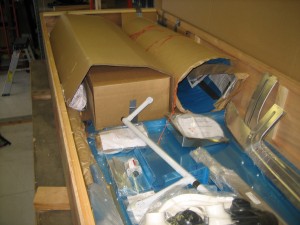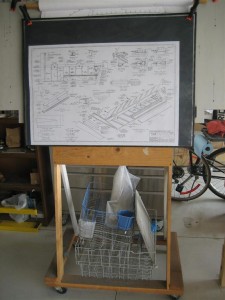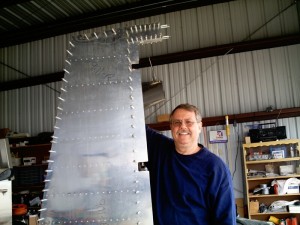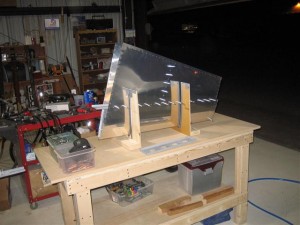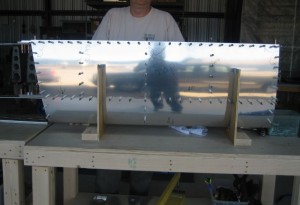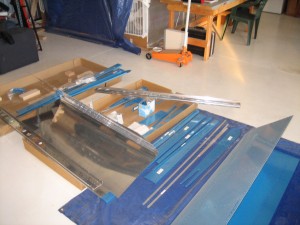Yesterday, we began with the fire wall, and we did the usual drill, de-burr and dimple (the three D’s) and I was about to take my hand and sweep all the metal filings to the floor with my hand. WAIT A MINUTE!!! WHAT WOULD MY SHOP TEACHER SAY!!! Ok, MANY years ago I took metal shop and quickly learned that shavings are brushed off with a brush, not your hand.
It is a good idea to remember some of the shop basics as you get started with your project. Safety glasses? Hearing protection (oh, com’on it’s just ONE rivet!) How about a quality ventilator mask when using shaker-can spray paint? (ESPECIALLY self-etching)
For us old folks, take a minute and remember the skills we learned in school. For you younger guys (and gals) who took computer skills lab instead of metal shop, find a gray-haired person who is building or has built a metal plane, and spend a friendly hour in your workshop and chat about the old days. Esp metal shop.
HMMMM??? I wonder where Mr. Bradshaw is today?
Thanks Mr. Bradshaw, I’m doing fine.
-Dkb

